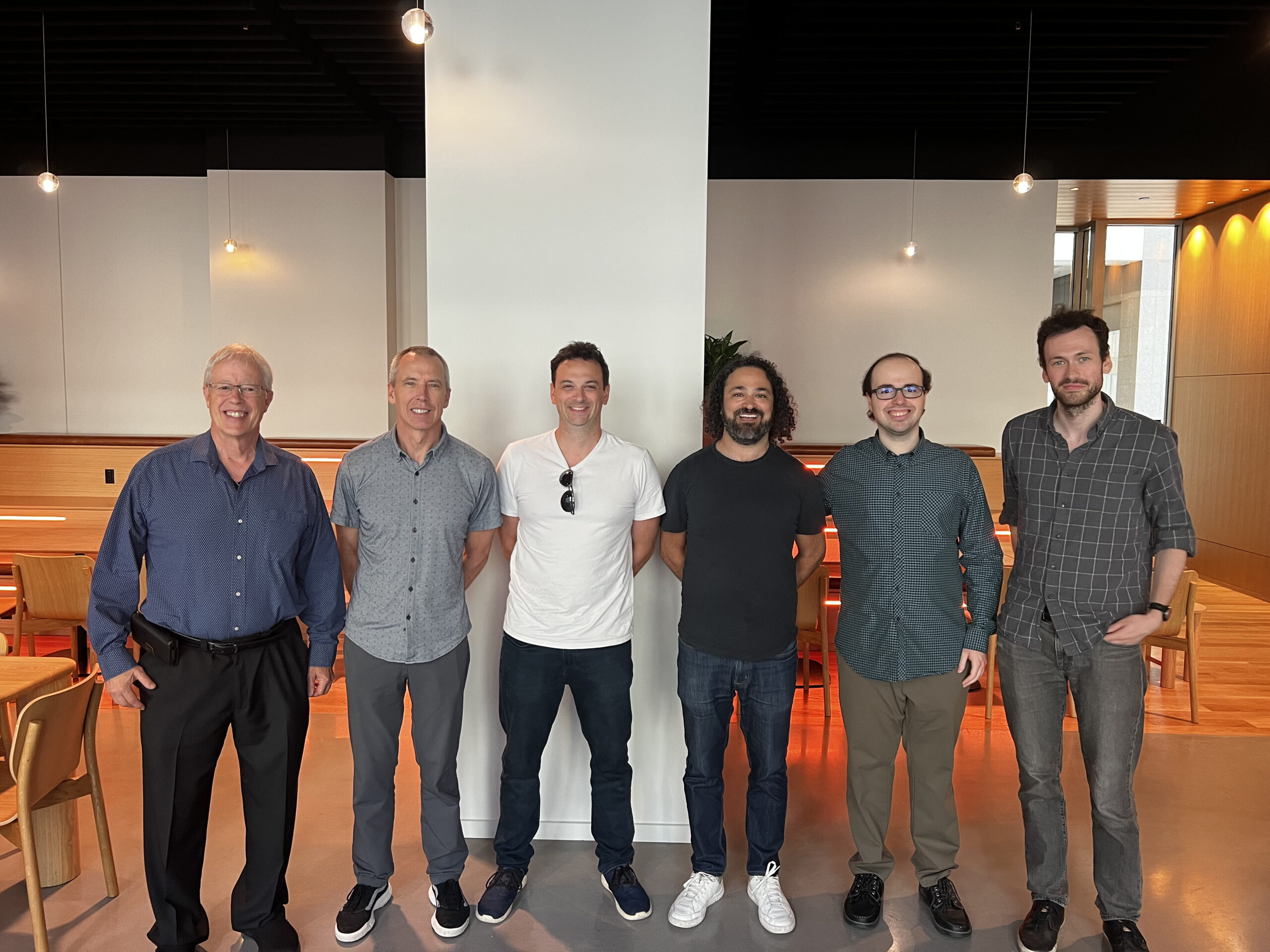With support from the Ontario Water Consortium’s Water Industry Growth Program, CSMC is showing how space technology could change the game here on Earth.
As humans begin colonizing space, they’re going to need water. That’s why the Canadian Space Mining Corporation (CSMC) is developing ways to find and extract it as efficiently as possible. “We don’t have the luxury in space of drilling holes, taking measurements and hoping that a stick in the ground is going to tell us how much water is there,” explains Adam Gryfe, CSMC’s Chief Operating Officer.
Instead, the Toronto company is creating a sensor-equipped satellite that can see what’s below the surface of moons and other planets in extraordinarily fine detail. The QASM instrument marries quantum physics with artificial intelligence to produce rich 3D tomography of water and groundwater resources from orbit.
And like the other technologies that CSMC is developing — from lunar medical clinics to modular nuclear reactors — the Earth-bound applications are just as exciting. “We’re laser focused on taking these innovations and applying them to big challenges here on Earth,” says Gryfe.
Those challenges include a global water shortage. As rising temperatures dry up lakes and rivers around the world, groundwater will become increasingly important. However, current technology for detecting and characterizing this crucial resource is hit and miss.
Applying the power of quantum physics
Tools like electrical ground sensors, gravimeters and acoustic-based seismology instruments can provide a rough idea of what’s underground. But they paint a fairly fuzzy picture, requiring costly — and often ecologically destructive — excavations over a large area to really understand what lies beneath.
QASM promises a radically faster and more accurate solution. As it scans the planet, the sensor will be able to identify pockets of water up to a kilometre beneath the surface at resolutions many orders of magnitude higher than conventional tech. “We’re talking atomic levels of the composition of the subsurface,” says Gryfe.
The secret to that extraordinary degree of detail lies in technology that measures the behaviour of the mysterious building blocks of matter called quantum particles.
That’s tricky on Earth, where electrical fluctuations, mechanical vibrations and other perturbances can distort sensor data. CSMC’s solution helps eliminate much of this noise, making it simple for QASM’s machine-learning algorithms to home in on the real numbers.
By pinpointing groundwater, QASM will significantly reduce the amount of exploratory drilling required for all kinds of projects — whether the goal is to find new sources of water or to make sure aquifers aren’t lurking underneath proposed construction sites, threatening the structural integrity of the new building. Less drilling means less damage to surrounding ecosystems, as well as big cost savings.
Not only that, QASM will also be able to characterize how clean the water is and track how its quantity and quality change over time, providing crucial data to the communities that depend on it.
Preparing for lift-off — with help from WIG
To date, CSMC has validated QASM’s performance models and worked with experts to develop design parameters for a commercial prototype. Now, they’re tapping into OWC’s Water Industry Growth (WIG) program to fund the next steps.
WIG was established to advance technology solutions to water challenges at the intersection of climate change, sustainability and society. In the case of CSMC, it’s allowed the company to recruit to Canada a specialised Stanford physicist to increase the fidelity of their models and apply bleeding-edge deep learning techniques to the data. They’ve also engaged a geophysicist from University of Waterloo to provide third-party validation.
Over the course of the next few months, they’ll test QASM’s expected performance, optimize the AI-powered models to achieve higher-fidelity resolutions and develop a comprehensive roadmap to commercialization.
“As with every technology in R&D, you’ve got to do things the right way,” says Gryfe. “The Ontario Water Consortium deserves a lot of credit for helping us do this, helping us employ the people in order to advance this further and really bring something we think can be an iconic technology for Canada to reality.”
CSMC aims to launch their satellite sensor within the next five years. It’s an ambitious goal, and Gryfe knows there will be financial and operational hurdles to overcome. But two things make him confident they’re on track to meet that goal. One is the enthusiastic response they’ve already received from potential stakeholders and investors.
The other is the seasoned team that CSMC has recruited. It includes Marc Donato, a space industry veteran who has worked on the Canadarm2 and RADARSAT-2 projects; Richard Boudreault, a world-renowned authority on space engineering and quantum mechanics, and most recently; Andrew Feustel, a geophysicist who served at NASA for 23 years, including as the agency’s Chief Astronaut and past Commander of the International Space Station.
“We have the team with both the heritage and experience and proven success in developing things of this complexity and delivering it to space,” says Gryfe.
“We’re incredibly bullish on this,” he concludes. “We believe it’s going to be a flagship technology for Canada that they can contribute to space activities as well as to solving climate and water crises worldwide.”
WIG supports industry innovations that accelerate growth, create jobs and strengthen Ontario’s water sector. For more information, click here.


